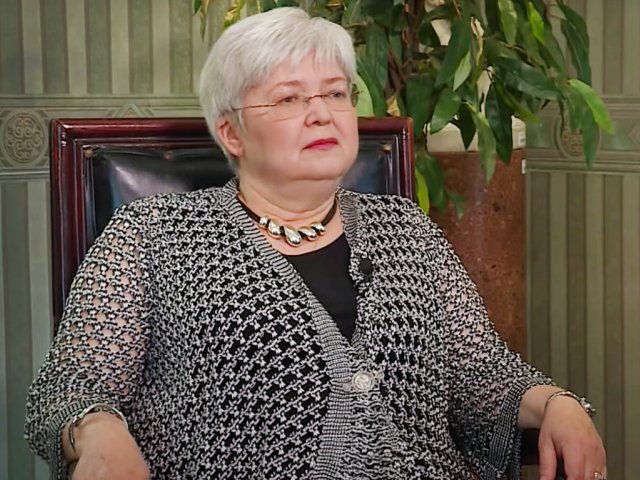Official:
George Gallup. November 18, 1901 – July 26, 1984. Statistician, sociologist, teacher, author of scientific methods for studying public opinion. A generic name for sociological surveys.
Life and Work:
1. In the 20th century, Norwegian, like many other languages, adopted many words from English. One of these Norwegian words translates as “public opinion poll.” This word is gallup. Gallup has become a generic name in Norwegian (and not only). Indeed, what is Gallup if not an opinion poll?
2. Gallup is credited with saying that it is enough to taste one spoonful of soup to understand its taste.
3. It is said that in his youth, George Gallup was greatly impressed by the phrase engraved on the monument to Abraham Lincoln: “What I want is to get done what the people desire to have done, and the question for me is how to find that out exactly.” And he devoted his life to finding it out.
4. George was born in the small town of Jefferson, Iowa, which today has a little more than four thousand residents.
5. The nanny called the active, energetic kid Ted – he reminded her of the newly elected President Theodore Roosevelt. The nickname stuck for life.
6. From the age of 10, Ted helped his father, a farmer: he took care of the cows, sold milk. When Gallup correctly predicted the outcome of the 1936 presidential election and became famous, Jefferson residents recalled the boy who delivered them milk.
7. The habit of rural work remained with Gallup for the rest of his life. In Princeton, where he founded the famous Gallup Institute, he had a small farm.
8. His father allowed him to keep some of the money, and Gallup Jr. used it to establish a school newspaper – he planned to become a journalist. Gallup also edited a newspaper at the University of Iowa.
9. In summer of 1923, Gallup worked as an interviewer in a newspaper reader survey. He liked the work, but not the questions: according to the future founder of the Institute of Public Opinion, they did not allow to accurately determine the consumers’ interests.
10. Gallup took it upon himself to develop the survey methodology, and became so interested that in 1928 he defended his dissertation for the degree of doctor of psychology titled An Objective Method for Determining Reader Interest in the Content of a Newspaper.
11. In 1925, George married the most beautiful – according to most of his fellow students – girl of his college. He conducted a survey – and married the winner.
12. Gallup began a teaching career at the universities of Iowa and Illinois, but it did not last long: the recognized professor was invited to head the research department at a large advertising agency. Gallup moved to New York in 1932 with his wife and two sons, Alec and George Jr. There, he studied the effectiveness of advertising and was almost the first to explore the market through interviewing customers.
13. In the same year, 1932, Gallup successfully predicted the victory of his mother-in-law, Ophelia Miller, in the race for the position of the Iowa secretary of state. This poll is considered to be one of the first actually scientific political surveys.
14. Studying the effectiveness of advertising and the first experiments with opinion polls on political topics brought Gallup invaluable experience and allowed to create a methodological foundation for public opinion polls. He obtained the tool and decided to use it in the interests of democracy.
15. In 1935, he founded his legendary Gallup Institute – the American Institute of Public Opinion – in Princeton, New Jersey. The most influential company with dozens of offices around the world started with a single room, a desk, a telephone, and a typewriter.
16. To ensure independence and objectivity, Gallup decided that he would not conduct any surveys paid or sponsored by any special interest groups, such as political parties.
17. The following year, Gallup achieved all-American fame. Based on the responses of only 50,000 respondents, he predicted the victory of Franklin Roosevelt in the presidential election.
18. Gallup was the first to introduce the concept of “a representative sample.” And an extremely popular magazine at that time, The Literary Digest, which interviewed as many as 2,000,000 people ahead of the same 1936 election, showed what happens when the sample is not representative. The magazine failed due to its survey method: the questionnaires were sent to addresses from the phone book, but phones were still quite a luxury at the time, so it was rich people, not the masses, who preferred the other runner-up.
19. Gallup’s electoral polls conducted during the 1936 election campaign are of great scientific importance: they determined the nature of modern political research and influenced the formation of sociological methods and principles in the second half of the 20th century.
20. Gallup’s Public Opinion in a Democracy, published in 1939, became a classical work.
21. Twelve years later, Gallup’s triumphal march was interrupted. On November 3, 1948, a picture of smiling Harry Truman holding a newspaper circled the globe. The Chicago Tribune headline screamed, “Dewey defeats Truman.” According to all opinion polls, Dewey should have won the presidential election, and the newspaper published a pre-prepared article. However, by the morning it was clear that Truman had won.
22. After this failure, thirty newspapers broke their contracts with Gallup Institute. According to Gallup himself, the fatal error was caused by the decision to stop conducting the polls three weeks before the voting. Anyway, Gallup’s surveys were respected so much that this unfortunate fact did not hinder his activities.
23. Gallup was one of the first to discover that Americans adore comics. It is thanks to Gallup that comics appeared on newspaper pages.
24. In an interview, Gallup said that he made the greatest contribution to the scientific area of public opinion research. Then he added that advertising research is an exciting game, and if he had to live his life again, he would like to play that game again.
25. Gallup died of a heart attack, and it happened far from the American coast: in a village near Bern, where the family had a summer home. The sociologist was buried in Princeton Cemetery. His tombstone bears the family’s medieval motto “Be bolde. Be wyse.”






















